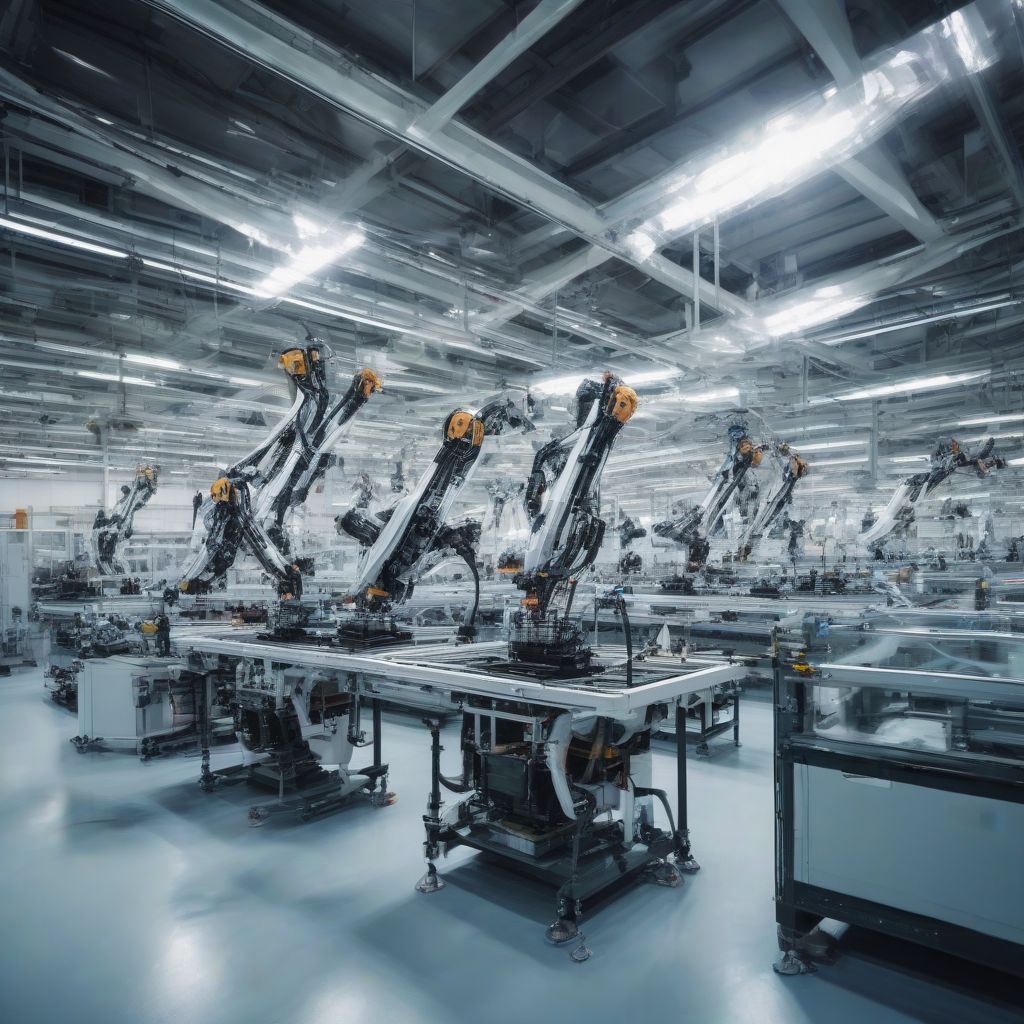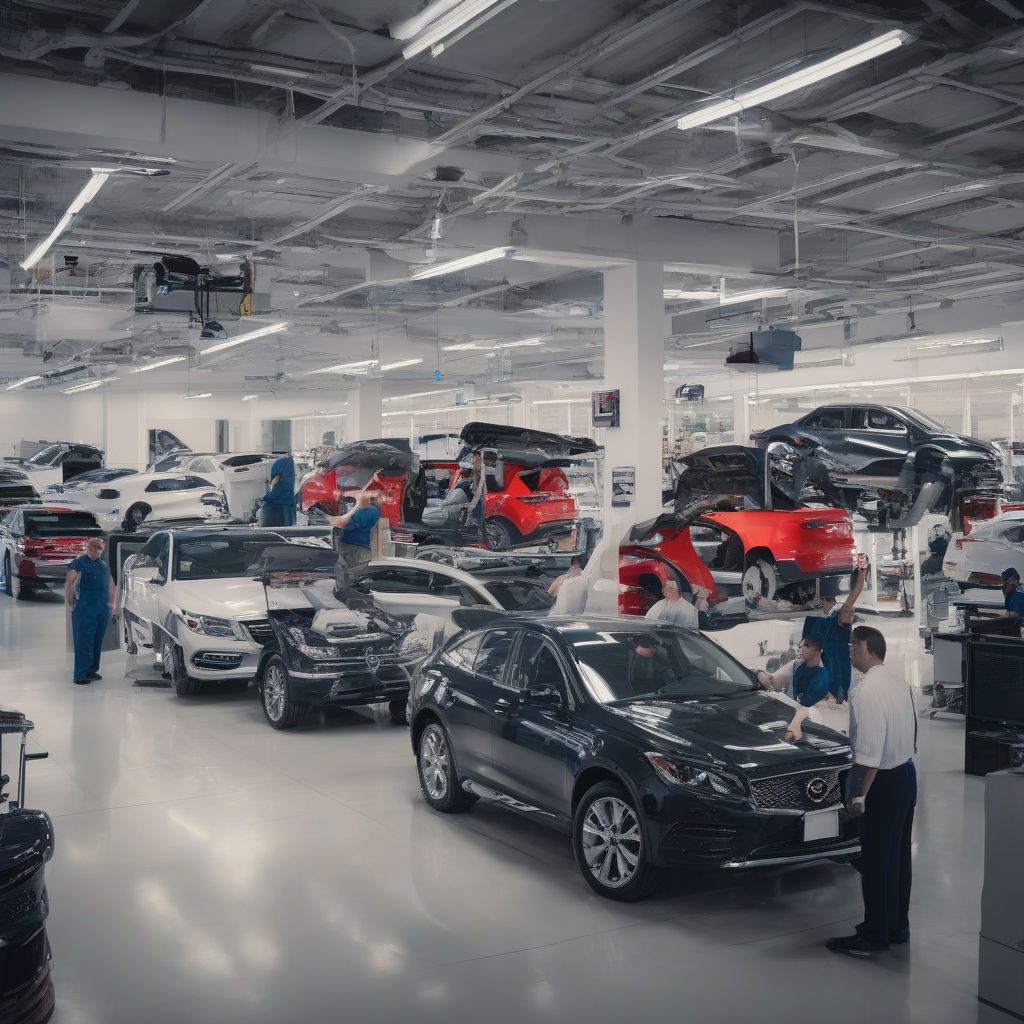Supply Chain Management in the Automotive Industry: A Deep Dive into Automation and Control
The automotive industry is a complex ecosystem of manufacturers, suppliers, distributors, and consumers, all operating within a global network. At the heart of this network lies the automotive supply chain, a critical component that dictates the efficient flow of materials, information, and finances from raw material extraction to the delivery of the final product. In recent years, the industry has witnessed a significant shift towards automation and control within supply chain management, driven by the need for increased efficiency, reduced costs, and enhanced responsiveness to fluctuating market demands.
The Evolving Landscape of Automotive Supply Chains
Traditional automotive supply chains, often linear and siloed, are being replaced by more agile, interconnected, and data-driven models. This transformation is fueled by several key factors:
- Globalization: The automotive industry operates on a global scale, with manufacturing and assembly plants scattered across continents. This necessitates seamless coordination and collaboration between geographically dispersed entities.
- Technological Advancements: Technologies such as the Internet of Things (IoT), artificial intelligence (AI), and cloud computing are revolutionizing supply chain management, enabling real-time visibility, predictive analytics, and automated decision-making.
- Customer Expectations: Modern consumers demand a wider range of vehicle options, shorter lead times, and personalized experiences, forcing manufacturers to adopt more flexible and responsive supply chain strategies.
- Sustainability Concerns: Growing environmental awareness is prompting automotive companies to optimize their supply chains for sustainability, minimizing waste, reducing carbon footprints, and embracing circular economy principles.
Automation and Control: Reshaping the Automotive Supply Chain
Automation and control are not merely buzzwords but rather essential ingredients for success in the modern automotive industry. Let’s explore how these concepts are being applied across different stages of the supply chain:
1. Procurement and Sourcing
- Automated Supplier Portals: Digital platforms streamline the procurement process, enabling manufacturers to manage supplier relationships, track performance, and automate order placements.
- Predictive Analytics: AI-powered systems analyze historical data and market trends to forecast demand fluctuations, optimize inventory levels, and mitigate supply chain disruptions.
- Blockchain Technology: Blockchain offers enhanced transparency and traceability throughout the sourcing process, ensuring the authenticity of parts and materials.
2. Production and Assembly
- Robotics and Automation: Industrial robots are widely deployed in automotive manufacturing plants to perform repetitive tasks with precision and speed, improving efficiency and reducing human error.
- Smart Factories: Connected machines, sensors, and data analytics platforms enable real-time monitoring of production processes, predictive maintenance, and agile adjustments to production schedules.
- Additive Manufacturing (3D Printing): 3D printing is transforming the production of prototypes, customized parts, and even entire vehicles, allowing for greater design flexibility and shorter lead times.
3. Logistics and Distribution
- Autonomous Vehicles: Self-driving trucks and delivery vans are being tested and implemented to optimize transportation routes, reduce delivery times, and enhance fuel efficiency.
- Smart Warehousing: Automated storage and retrieval systems (AS/RS) combined with warehouse management software optimize inventory management, space utilization, and order fulfillment.
- Real-time Tracking and Visibility: GPS tracking, RFID tags, and IoT sensors provide real-time visibility into the location and status of shipments, enabling proactive exception handling and improved customer communication.
Benefits of Automation and Control in Automotive Supply Chain Management
The implementation of automation and control technologies offers a multitude of benefits for automotive companies:
- Cost Reduction: Automation minimizes labor costs, reduces material waste, and optimizes inventory levels, leading to significant cost savings across the supply chain.
- Increased Efficiency: Automated processes and data-driven insights streamline operations, improve productivity, and shorten lead times from production to delivery.
- Enhanced Flexibility and Responsiveness: Agile supply chains powered by real-time data and automated decision-making can quickly adapt to changing market demands, supply disruptions, and evolving customer needs.
- Improved Quality and Reduced Errors: Automation minimizes the potential for human error in manufacturing and logistics processes, leading to higher product quality and reduced warranty claims.
- Enhanced Sustainability: Optimized logistics routes, efficient resource utilization, and the adoption of circular economy principles contribute to a more sustainable and environmentally friendly automotive industry.
Challenges and Considerations
While the benefits of automation are undeniable, automotive companies must address several challenges:
- High Initial Investment: Implementing advanced automation technologies requires significant upfront investment, which can be a barrier for smaller companies.
- Data Security and Privacy: As supply chains become more interconnected and data-driven, ensuring the security and privacy of sensitive information is paramount.
- Workforce Adaptation: Automation may lead to job displacement in certain areas, necessitating workforce retraining and upskilling initiatives.
The Future of Automotive Supply Chain Management
The automotive industry is on the cusp of a technological revolution. Emerging technologies like artificial intelligence, blockchain, and 5G connectivity are poised to further transform supply chain management in the years to come.
Automotive companies that embrace these advancements and effectively integrate automation and control into their supply chain strategies will be best positioned to thrive in this rapidly evolving landscape.


